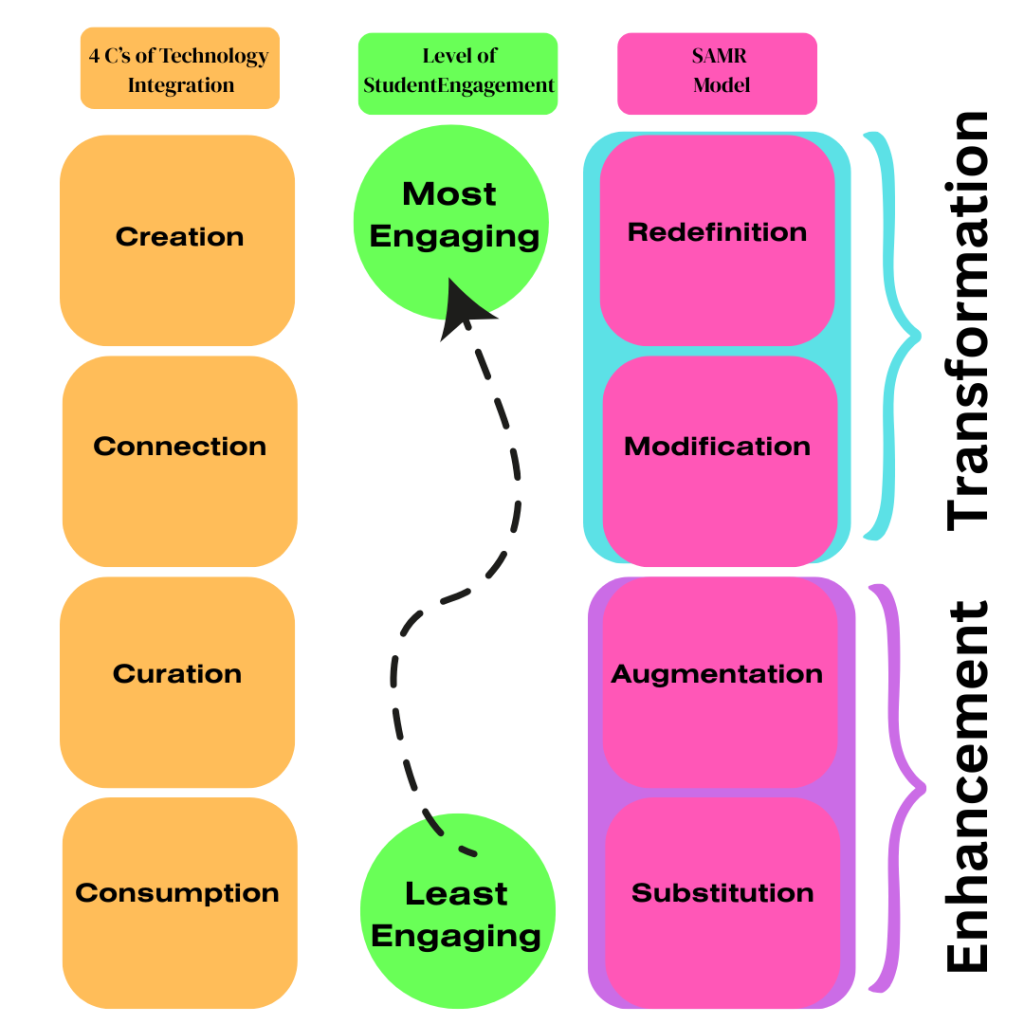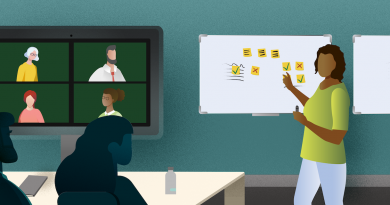Using the SAMR Model of Tech Integration in the Classroom
An edtech expert describes what substitution, augmentation, modification, and redefinition mean in lesson design—and how to reach that elusive final level.
The SAMR framework of technology integration—substitution, augmentation, modification, redefinition—has been around since 2010. Other models have been developed in that time, but I find the SAMR model easiest to understand for future educators.
Some describe SAMR as the slope from the shallow to the deep end of the pool, while others refer to it as a ladder. Regardless of how it is explained, getting to the level of redefinition sometimes feels elusive, partially because there aren’t truly clear-cut lines and concrete definitions of the SAMR levels; while it’s fairly easy to understand that S is substitution, moving farther along the spectrum of technology integration can get a bit confusing.
After I teach my university preservice students about the SAMR model, we often use it to analyze lesson plans they created. “You’re having your students type a paper in social studies? That’s substitution.” “Your social studies students are typing the paper in a Google Doc, and you are leaving feedback in the comments? That’s augmentation.” Students and teachers often get stuck in these two levels, which are best defined as enhancements to learning, but how does a social studies lesson move toward modification?
In the classroom
My favorite example of redefinition in a social studies class happened when my friend from the Philippines stayed up until 2 a.m. to answer questions that our sixth-grade students had about her country. Our video guest’s father played a crucial role in the Philippine military during the 1989 coup attempt in that country. The students asked real-life questions about Philippine culture and were amazed to hear the stories she shared. Engagement was extremely high during that class period.
But let’s be honest, not every lesson lends itself to the redefinition level of the SAMR model, and that’s OK. There is no wrong level of technology integration. There are benefits to every level, but after 20 years in the educational technology world, I have noticed that the higher they go up the SAMR model, the more on-task students seem to be.

So the question to ask yourself that bears answering is, “How often am I striving for transformational use of technology in the classroom? As engagement often equals increased learning, how can I move toward the redefinition level?”
As you consider how you are currently integrating technology for student use, remember that the more interactive a student is with technology, the more engaging it will be. When students primarily use technology to consume content or gather research, instruction typically operates at the substitution or augmentation levels of the SAMR model. Students using technology for creation and connection purposes are likely approaching the redefinition level.
As mentioned earlier, time can be the most challenging variable in reaching redefinition. As someone who was once an elementary STEM coordinator, I know that project-based learning and design thinking lessons take a lot of time. Creating meaningful technology integration lessons can fall into the same category.
Source: https://www.edutopia.org/article/model-implementing-technology-classroom




